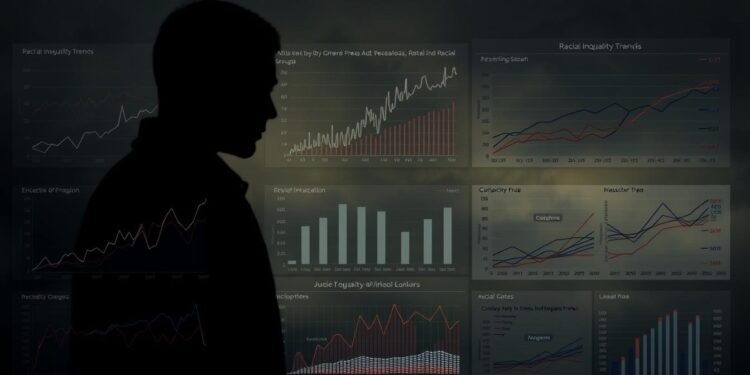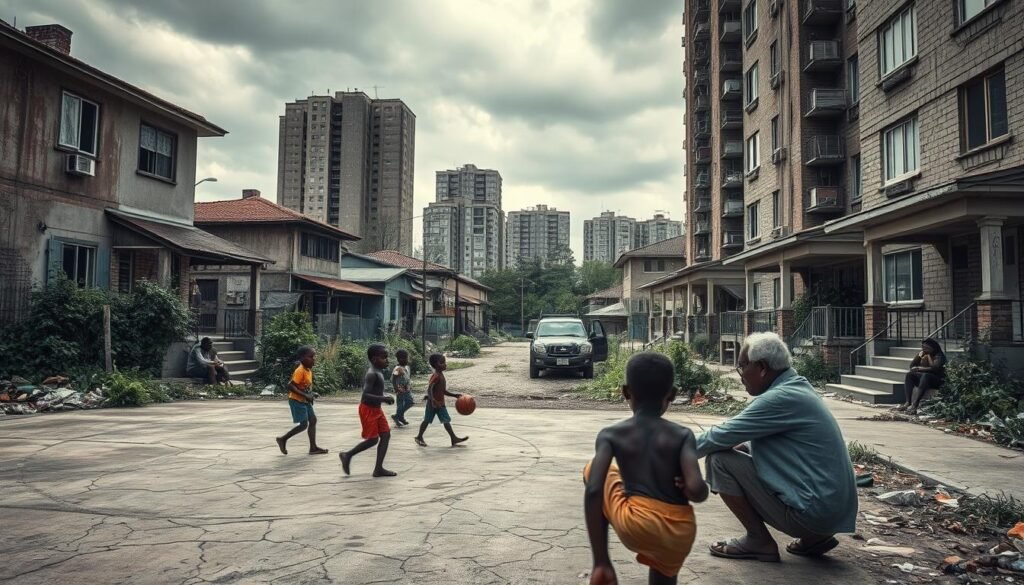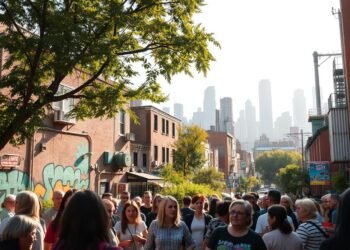What if America’s economic future depends on addressing disparities that have persisted for centuries? This question lies at the heart of our nation’s ongoing conversation about fairness and opportunity.
Today, significant gaps exist across different groups in income, education, and wealth. These differences affect families and communities throughout the country. Research shows these disparities impact economic growth for everyone.
Government leaders now emphasize that excluding certain groups from opportunity holds back national progress. This analysis examines why these gaps persist and their far-reaching consequences.
We’ll explore historical context, current data, and potential solutions. Understanding these complex issues is crucial for building a stronger, more equitable society.
Key Takeaways
- Economic disparities affect multiple aspects of American life including income, education, and wealth
- Historical policies continue to impact different racial and ethnic groups today
- Exclusion from opportunity negatively affects national economic growth
- Comprehensive data reveals persistent gaps across multiple indicators
- Addressing these issues requires understanding both historical context and current manifestations
- Policy solutions focus on creating more equitable access to education and employment
- Economic arguments join moral and legal reasons for addressing systemic disparities
Introduction: Understanding Racial Inequality in America
America’s economic strength depends on unlocking potential in every community. When certain groups face barriers, our entire nation loses valuable contributions.
Defining the Core Issue
Systemic disparities affect many areas of life. These differences show up in wealth, health outcomes, and educational access.
Historical policies created lasting effects. They limited opportunity for some racial ethnic groups while benefiting others.
The data reveals persistent gaps. Research shows these patterns continue across generations.
The Economic and Social Imperative for Equity
Our economy cannot reach full productivity when people face limited opportunities. Exclusion holds back growth for the entire country.
Government leaders emphasize the economic benefits of addressing these issues. Treasury officials note how equity initiatives boost national progress.
Beyond economic reasons, moral and legal imperatives demand attention. The COVID-19 pandemic highlighted existing disparities in stark terms.
Understanding these complex issues requires examining both current data and historical context. This knowledge helps create effective policy solutions.
The Historical Roots of Systemic Racial Disparities
The architecture of American disparity was built over centuries through deliberate policy choices. These decisions created lasting patterns that continue to affect economic outcomes today.
Understanding this background helps explain why gaps persist across generations. Historical context shows how policies shaped current realities for different groups.
From Slavery to Jim Crow: A Legacy of Oppression
Colonial America’s economy relied heavily on enslaved labor. This system created fundamental wealth differences that would persist for generations.
After emancipation, Jim Crow laws established legal segregation across Southern states. These restrictions severely limited economic mobility for Black citizens.
The Great Migration saw African Americans move north seeking better opportunities. Many faced continued discrimination in housing and employment in their new communities.
Various immigrant groups also encountered exclusionary policies throughout history. The Chinese Exclusion Act of 1882 represents one early example of targeted restrictions.
20th Century Policies: Redlining and Exclusion
The 1930s brought federal housing policies that reinforced segregation patterns. The Home Owners Loan Corporation created color-coded maps that guided lending decisions.
Banks used these maps to deny mortgages in minority neighborhoods. This practice depressed property values and limited home ownership rates for decades.
Redlining created intergenerational wealth consequences that still affect families today. Even after overt discrimination became illegal, many barriers remained.
These historical policies not only limited access to resources but affected how people benefit from assets they possess. The failure to address these legacy effects has perpetuated economic differences.
Research shows that understanding this context is essential for comprehending modern disparities. Historical policies continue to influence economic outcomes across the country.
The Persistence of Racial Inequality in the Modern Era
Groundbreaking research reveals how historical family circumstances continue to shape economic outcomes generations later. Despite civil rights advancements, economic differences persist across groups in our country.
Recent studies show that family history from the 19th century still affects economic status today. These findings help explain why progress has been uneven across different communities.
Why Historical Injustices Continue to Matter Today
Research by Althoff and Reichardt (2024) demonstrates the lasting impact of ancestral experiences. Their work reveals a Free-Enslaved gap that accounts for 20-60% of Black-white economic differences.
Black Americans whose ancestors were enslaved until the Civil War face significant economic disadvantages. Those with ancestors freed earlier maintained intergenerational advantages in wealth and education.
The research used innovative methods including automated record linkage and surname analysis. Researchers traced family histories back to 1850-1860 censuses to identify enslavement status.
This methodology provides unprecedented evidence of how deeply historical institutions affected economic outcomes. The findings show that contemporary disparities cannot be understood without historical context.
The “Free-Enslaved Gap”: A New Measure of Lasting Impact
Formerly enslaved families emerged from the Civil War with no belongings and often no literacy. This created a profound starting disadvantage that affected generations.
Free Black families before the war had gained some level of wealth and education. These advantages provided better opportunities for their descendants.
The Reconstruction period offered brief progress with increased literacy and political participation. Jim Crow laws then reversed these gains for almost a century.
Research shows that if formerly enslaved families had been distributed across the country like free Black Americans, the gap would have closed by 1940. Geographic concentration in areas with intense Jim Crow regimes perpetuated the disparity.
This research provides crucial insights into the persistence of economic differences within the Black community. It underscores how specific historical experiences continue to shape life outcomes today.
Economic Indicators of Inequality: Wealth, Income, and Employment
Financial security varies dramatically across American households. Recent data reveals stark contrasts in economic well-being among different groups.
These differences affect everything from retirement planning to emergency savings. They also influence educational opportunities for children.
The Racial Wealth Gap: A Stark Divide
Federal Reserve numbers from late 2023 show extreme concentration of resources. White households control over 84% of total wealth while representing 66% of families.
This contrasts sharply with Black and Hispanic households. They hold just 3.4% and 2.3% of wealth respectively.
Median figures reveal even more dramatic differences. Black families average $44,100 in net worth compared to $282,310 for white families.
Latino households show slightly higher median wealth at $62,120. Both groups face significant financial vulnerability.
Nearly 28% of Black families and 26% of Latino families have zero or negative wealth. This is double the rate for white households.
Disparities in Household Income and Earnings
Income patterns show similar gaps across racial lines. Black workers earn median incomes around $46,000 annually.
Hispanic workers average approximately $55,500 per year. White households typically earn about $75,000.
Asian families show the highest median income at $95,000. These income differences have persisted for decades.
The consistency of these gaps since the 1970s demonstrates their deep roots. Income inequality directly contributes to wealth disparities over time.
Unemployment and Labor Market Discrimination
Joblessness affects communities differently across the country. Black and Native American adults face unemployment rates roughly double those of white workers.
This pattern holds true even during periods of economic growth. Labor market discrimination plays a significant role in these persistent gaps.
Hiring practices, pay differences, and job segregation all contribute. These factors limit economic mobility for many people.
The public sector has historically provided stable employment opportunities for Black workers. Certain policy directions could threaten this important source of middle-class jobs.
These economic indicators collectively show how inequality manifests in daily life. They demonstrate tangible differences in financial security and opportunity.
The Racial Wealth Divide in Detail
Building wealth in America often starts with owning property and getting an education. These two areas show deep divisions between different groups of people.
Home ownership creates financial security for most families. It helps people build value over time. But not everyone has equal access to this opportunity.
Homeownership and the Legacy of Housing Discrimination
Black families made some progress in buying homes between 1960 and 2020. But the gap with white families actually grew worse during this period.
It went from 26 to 30 percentage points. This happened because of ongoing structural problems.
Lower incomes and higher mortgage denials hurt Black families. Segregation also plays a role in keeping the gap wide.
Historical practices like redlining still affect communities today. They created patterns that limit wealth building.
These barriers mean families miss out on home equity growth. This affects their ability to help children with education costs.
Student Debt Burdens and Their Racialized Impact
Education should open doors to better jobs and higher pay. But student loans create heavy burdens for many graduates.
Black students borrow more money than white peers for the same degrees. Bachelor’s degree graduates face 11% more debt.
Associate’s degree graduates carry 20% more debt. This creates a difficult financial situation after graduation.
The problem gets worse because of pay differences. Black graduates earn 20% less than white graduates with Bachelor’s degrees.
Associate’s degree holders make 8% less. This double burden makes loan repayment very challenging.
Debt payments limit money available for home buying or retirement savings. It affects wealth building across generations.
These two areas – housing and education – work together to maintain wealth gaps. Addressing both is key to making progress.
Racial Income Inequality and Occupational Segregation
Corporate boardrooms reveal stark contrasts in leadership diversity across America. These patterns reflect deeper issues in how opportunity gets distributed throughout the workforce.
The data shows extreme underrepresentation at the highest levels of business. In 2021, only 4 Black and 17 Latino individuals led Fortune 500 companies.
This represents just 4% of total leadership positions. Meanwhile, these same groups comprise 43% of workers who would benefit from a $15 minimum wage.
CEO Representation and the Wage Gap
Pay differences persist throughout the American workforce. The median white worker makes 24% more than the typical Black worker.
The gap grows to 29% when comparing white and Latino workers. These differences reflect persistent labor market discrimination.
Occupational segregation channels workers of color into lower-paying fields. Many face limited advancement opportunity in their chosen careers.
Discrimination in hiring and promotion practices continues despite legal protections. This affects income levels for entire families.
The Role of the Public Sector as an Employer
Government employment has historically provided crucial stability for Black workers. These jobs often offer better pay and benefits than private sector options.
Black workers represent a disproportionate share of federal employees. At agencies like the Department of Veterans Affairs, they comprise over a quarter of staff.
This makes them vulnerable to proposed layoffs targeting 80,000 positions. Such cuts would disproportionately affect Black community economic stability.
The concentration of workers in certain industries reflects both historical exclusion and contemporary barriers. Addressing these patterns requires proactive policy solutions.
Creating pathways to higher-paying occupations remains essential for reducing income disparities across groups.
Education: The Early and Enduring Opportunity Gap
Educational opportunity gaps begin shaping lives long before children ever enter a classroom. These differences in early learning experiences create lasting effects that follow students throughout their academic journeys.
The education system reveals persistent disparities across demographic groups. These patterns start in early childhood and continue through higher education.
Disparities from Kindergarten to College
Significant skill differences appear at the very start of formal schooling. In 2010, math abilities at kindergarten entry showed white students outperforming Black and Hispanic peers by over half a standard deviation.
Similar reading gaps existed at this early age. These achievement differences reflect varied early childhood experiences and access to quality preschool programs.
Home environment resources contribute significantly to these early gaps. Children from different backgrounds enter school with unequal preparation for academic success.
School funding patterns often favor predominantly white districts. This creates unequal educational resources that affect outcomes across all grade levels.
Many schools remain highly segregated by race and ethnicity. This separation affects educational quality through multiple mechanisms that limit opportunity.
Educational Attainment and Degree Completion Rates
Bachelor’s degree completion shows dramatic variations across population groups. By 2019, 40% of white adults had earned four-year degrees.
This contrasts sharply with other racial ethnic groups. Only 26% of Black adults held bachelor’s degrees, while Hispanic adults reached just 19%.
American Indian and Alaska Native adults showed the lowest completion rates at 17%. These attainment gaps have profound economic consequences throughout careers.
Students of color often face heavier debt burdens while pursuing degrees. Many must work more hours during school, creating additional challenges for completion.
These educational disparities both reflect and reinforce economic differences. Lower attainment limits economic mobility while economic disadvantage restricts educational opportunity.
Addressing these gaps requires interventions at multiple levels. Early childhood through higher education programs must work together to break cycles of intergenerational inequality.
Health Disparities and Access to Care
Health differences across communities represent some of the most persistent divides in our nation. These gaps appear early in life and continue through adulthood, affecting both quality of life and longevity.
Research shows these patterns reflect complex social and environmental factors. Addressing them requires understanding how multiple systems interact to create health outcomes.
Inequities from Childhood to Adulthood
Health gaps begin appearing in the earliest years of life. Children from minority communities face higher rates of adverse experiences that affect development.
These include greater exposure to environmental toxins like lead. They also experience higher rates of childhood obesity that often continue into adult years.
Chronic conditions appear earlier and progress faster in many communities. Diabetes, hypertension, and heart disease show significant disparity patterns.
These health differences accumulate over time, creating substantial gaps in life expectancy. The stress of economic hardship and discrimination contributes to these patterns through physiological effects.
Environmental Factors and Chronic Illness
Where people live significantly influences their health outcomes. Many communities face limited access to fresh food and safe recreation spaces.
Neighborhoods with higher minority populations often have greater exposure to pollution sources. This environmental burden contributes to higher rates of respiratory and other conditions.
Healthcare access varies dramatically across different areas. Insurance coverage, transportation barriers, and provider availability all affect care quality.
Medical professionals sometimes deliver different care based on patient background. Communication challenges and implicit biases can affect diagnosis and treatment approaches.
Later diagnosis and less aggressive treatment contribute to worse outcomes for many conditions. Preventive services also show utilization gaps across demographic groups.
Addressing these complex issues requires both medical system improvements and community investment. Creating healthier environments and better care access can help reduce persistent health disparities.
Racial Inequality and the COVID-19 Pandemic
The global health crisis revealed deep fault lines in American society. It showed how existing disparities could worsen during emergencies.
Some communities faced greater risks than others. The pandemic affected people differently based on their background.
Disproportionate Mortality and Hospitalization Rates
Some groups suffered much higher death rates from COVID-19. Indigenous Americans died at more than twice the rate of white citizens.
Black and Hispanic communities also faced elevated risks. They were nearly twice as likely to die compared to white Americans.
Hospital stays followed similar patterns. People from certain backgrounds needed more medical care during infections.
Telework Ability and Economic Vulnerability
Working from home became a privilege during lockdowns. Not everyone could perform their jobs remotely.
Black and Hispanic workers had less telework ability than others. Only 19% and 14% could work from home respectively.
Asian workers reported the highest remote work rates at 38%. White workers followed at 24%.
Education played a major role in these differences. College graduates had better remote work opportunities.
Many essential workers came from minority communities. They kept working in person throughout the pandemic.
The Impact on Life Expectancy
The pandemic shortened lives across the country. But some groups lost more years than others.
American Indians and Alaska Natives suffered the steepest decline. They lost over six years of life expectancy.
Latino and Black communities lost about four years each. White and Asian Americans lost approximately two years.
These changes reversed decades of gradual progress. They showed how health crises can widen existing gaps.
The pandemic revealed connections between health, work, and economic security. It showed how disadvantages can multiply during difficult times.
Geographic Inequality: Neighborhood Poverty and Segregation
Neighborhood characteristics often determine access to resources that fuel economic mobility throughout the country. Where families live significantly influences their chances for success across multiple generations.
Recent data reveals concentrated poverty affects communities differently across the United States. These patterns show deep divisions in opportunity based on geographic location.
The Concentration of Poverty in Communities of Color
Poverty clusters unevenly across different racial ethnic groups in America. In 2019, nearly a quarter of American Indians and Alaska Natives lived in high-poverty neighborhoods.
These areas have poverty rates of 30% or higher. About 21% of Black people and 17% of Hispanic people faced similar conditions.
This contrasts sharply with white and Asian communities. Only 4% of white people and 6% of Asian/Pacific Islanders lived in such high-poverty areas.
Many communities maintain these conditions for decades. People of color are far more likely to live in persistently poor neighborhoods.
These areas show poverty rates of 20% or higher for at least 30 years. This reflects long-term economic isolation that affects multiple generations.
Lack of Access to Resources and Amenities
High-poverty neighborhoods typically lack crucial community resources. Residents often face limited access to quality schools and educational opportunities.
Many areas lack full-service grocery stores offering fresh food options. Reliable public transportation remains scarce in these communities.
Safe recreational spaces and parks are frequently unavailable. This geographic isolation creates compound disadvantages for families.
Limited access affects employment opportunities and healthcare facilities. Environmental hazards often concentrate in these areas too.
Historical policies including redlining created these patterns deliberately. Discriminatory lending practices reinforced segregation over time.
Infrastructure decisions have historically favored white neighborhoods. This exacerbated resource disparities across geographic lines.
Banking services and financial institutions are often scarce. This further constrains economic mobility and wealth building.
Addressing these issues requires targeted community investments. Systematic deprivation of resources demands focused policy solutions.
Intersectionality: Race and Gender Inequality
Economic challenges multiply when people face discrimination based on both their background and gender. This intersection creates unique barriers that require special attention.
Women from minority communities often experience compounded disadvantages. They face both gender pay gaps and racial disparities in the workplace.
The Compound Disadvantages for Women of Color
Hispanic and Latina women earn the lowest wages among major demographic groups. They make just 50 cents for every dollar earned by Asian men.
Compared to white men, they earn 65 cents per dollar. This wage gap persists across industries and education levels.
Black women carry heavy student debt burdens that affect their financial stability. About 43.3% have education loans compared to 15.7% of white men.
This debt difference creates long-term wealth building challenges. It limits home buying ability and retirement savings for many families.
Poverty Rates Across Race and Gender
Poverty affects communities differently based on both race and gender. White men experience the lowest rates at 6.8%.
Black women face poverty at 17%, while Latinas experience 16% rates. Native American women show the highest levels at 20%.
These differences reflect both labor market discrimination and caregiving responsibilities. Many women balance work with family support duties.
Occupational segregation channels women into lower-paying fields with limited advancement. They often face dual discrimination in hiring and promotion practices.
Understanding these intersectional dynamics helps create better policy solutions. Targeted approaches can address the unique barriers different groups face.
Systemic Barriers to Black Economic Progress
State-level legislation created powerful obstacles that limited advancement for generations. These laws deliberately restricted movement and opportunity across the South.
The end of Reconstruction marked a turning point in American history. Southern states quickly implemented new systems of control.
The Devastating Impact of Jim Crow Laws
Jim Crow legislation emerged just twelve years after slavery ended. These laws systematically reversed gains made during Reconstruction.
Southern states passed restrictions that limited voting rights for Black citizens. They also enforced strict segregation in public spaces.
Economic mobility became severely constrained under these regimes. Geographic movement faced new barriers across state lines.
Research shows these policies created dramatic differences in outcomes. Black families in strict Jim Crow states attained less education.
Louisiana families under intense restrictions gained over a year less schooling than those in Texas. This gap demonstrates the policy’s powerful impact.
How State-Level Policies Created Long-Term Divergence
Different states implemented varying intensities of Jim Crow regimes. This created uneven economic progress across the South.
Border analyses reveal clear relationships between policy strictness and reduced advancement. Areas with weaker restrictions showed better outcomes.
The concentration of formerly enslaved families in strict Jim Crow states explains persistent gaps. If distributed nationally, these differences would have closed earlier.
These state-level choices created path dependencies that continue today. Intergenerational transmission of disadvantage remains evident.
Understanding these historical policy differences helps explain contemporary variations. Regional disparities still reflect these early legislative decisions.
The rapid reversal of Reconstruction gains shows how quickly progress can be undone. Deliberate policy choices created lasting economic divisions.
Policy Interventions and Their Measurable Impact
Government programs throughout American history have created dramatically different outcomes depending on their design and implementation. Some initiatives successfully reduced opportunity gaps while others reinforced existing divides.
Two historical examples show how policy choices can either address or exacerbate economic differences. The Rosenwald Schools and GI Bill represent contrasting approaches with lasting consequences.
The Rosenwald Schools: A Case Study in Successful Investment
Between 1912 and 1932, the Rosenwald School program built approximately 5,000 schools across the South. This initiative created educational opportunities during the Jim Crow era.
The program educated about one-third of all Black children in the region. It demonstrated strong demand for learning despite limited economic returns at the time.
Research shows these schools produced significant benefits for students. Children living under the most oppressive regimes gained the most from access to quality education.
This example proves that targeted investments can yield returns even in challenging contexts. The program helped reduce educational gaps despite systemic barriers.
The GI Bill and Its Exclusionary Effects
The World War II GI Bill represented one of the largest wealth-building programs in United States history. Unfortunately, many Black veterans faced exclusion from its benefits.
Discriminatory practices in the South particularly limited access for these service members. Local administrators often denied applications through various methods.
This exclusion contributed significantly to contemporary wealth differences. White families gained homes and education while many Black families missed these opportunities.
In 2023, Senator Raphael Warnock proposed legislation to address this historical injustice. His bill seeks to repair the negative effects of this exclusionary implementation.
These contrasting cases show how policy design and execution matter greatly. Inclusive programs can reduce gaps while exclusionary practices widen them.
Understanding these historical examples helps inform current policy discussions. Effective interventions require both good design and equitable implementation.
The Economic Argument for Racial Equity
Economic growth in our nation depends on using all available talent. When people face barriers due to background, everyone loses potential benefits.
Recent studies show how inclusion boosts prosperity for all citizens. Changing social norms opened doors for many talented individuals.
How Inequality Hinders National Growth and Productivity
Research reveals a stunning fact about our country’s economic expansion. Up to 40% of GDP growth between 1960-2010 came from new opportunities.
Women and Black men entered high-skilled jobs during this period. Their participation in various fields increased significantly over time.
Before this shift, social norms kept many people from certain occupations. Talented individuals could not pursue their best career paths.
This exclusion limited our nation’s productive capacity for years. The economy could not reach its full potential with these restrictions.
When barriers decrease, innovation and output increase across sectors. Everyone benefits from a more productive workforce.
The Cost of Discrimination to the U.S. Economy
Discrimination creates economic losses that affect the entire country. These costs go beyond the individuals who face direct exclusion.
Negative effects spread through communities and reduce overall growth. The United States misses opportunities when talent remains untapped.
Investments that help people build economic security pay broad dividends. Families gain stability while communities gain economic activity.
Global competition makes full inclusion an economic necessity. Nations that use all available talent gain competitive advantages.
Current government strategies recognize this economic reality. They emphasize human capital development and reducing structural barriers.
Treasury officials note how equity initiatives drive innovation economy-wide. These efforts complement moral and legal reasons for addressing disparities.
A country’s long-term growth depends on its workforce size and skills. Making full use of human potential becomes an economic imperative for progress.
The Ongoing Debate: Reparations and Policy Solutions
National conversations about historical injustices have gained new momentum in recent years. These discussions focus on how to address lasting economic gaps that affect many families today.
Reparations proposals have returned to public attention with fresh research support. Academic studies show how past discrimination continues to impact economic status across generations.
Addressing the Legacies of Slavery and Jim Crow
Research demonstrates that effective solutions must address multiple historical periods. The damage from slavery was compounded by later Jim Crow laws.
These policies created barriers that limited progress for decades. They affected education, home ownership, and job opportunities.
The Free-Enslaved gap research provides powerful evidence. It shows how family history from the 19th century still influences economic outcomes today.
This work reveals that formerly enslaved families faced greater challenges. Their descendants continue to experience economic differences compared to other groups.
Current Legislative Proposals and Their Aims
Senator Raphael Warnock has proposed addressing one historical injustice directly. His bill would provide GI Bill benefits to families of excluded Black WWII veterans.
This legislation recognizes how past discrimination affects wealth building. Many veterans missed opportunities that helped white families build economic security.
Other proposals include targeted investments in affected communities. Some suggest direct payments to descendants of enslaved people.
The debate includes various approaches to addressing historical wrongs. Each method has different implications for closing economic gaps.
Proponents argue reparations are necessary for true progress. They note how wealth transfers through slavery and discrimination created lasting disadvantages.
Opponents raise concerns about practical implementation questions. They also question responsibility across generations for past actions.
This discussion reflects broader questions about national responsibility. It involves moral, economic, and legal considerations about historical injustices.
Policy solutions must address both historical roots and current mechanisms. Effective approaches recognize how past policies continue to affect opportunity today.
Conclusion: The Path Forward for Racial Equity in the United States
Moving forward requires comprehensive approaches that address both historical and current disparities. Effective solutions must span multiple areas including wealth building, education access, and fair employment practices.
Research shows that targeted investments in affected communities yield significant returns. Programs like the Rosenwald Schools demonstrate how focused efforts can create meaningful progress despite systemic barriers.
The economic benefits extend beyond individual communities to strengthen our entire country. When all people can contribute their full potential, everyone gains from increased productivity and growth.
Building a more equitable future demands collective commitment across sectors. Both public policy and private initiatives must work together to create pathways toward economic security for all groups.
FAQ
What is the main reason for the wealth gap between white and Black families today?
The wealth gap stems from centuries of discriminatory policies. Practices like redlining prevented Black families from buying homes in certain areas, blocking a key way to build wealth. Unequal access to education and good jobs also played a big role. These historical barriers have had a lasting impact.
How does education contribute to ongoing disparities?
From an early age, children in marginalized groups often have less access to quality schools and resources. This affects their test scores and chances of getting a college degree. Lower educational attainment can limit future job opportunities and earnings, continuing the cycle.
Did the COVID-19 pandemic worsen existing inequalities?
Yes, significantly. Communities of color faced higher rates of infection and death. Many also worked in jobs that couldn’t be done from home, increasing their exposure. The economic downturn hit these groups harder, widening existing income and health gaps.
What is the "free-enslaved gap" and why is it important?
This term measures the long-term economic impact of slavery. It compares outcomes between descendants of enslaved people and others. The data shows that this history still affects wealth, education, and health today, highlighting how past injustice shapes the present.
How do gender and race combine to create unique challenges?
Women of color often face both racial and gender bias. This can mean lower pay, fewer leadership roles, and higher poverty rates compared to white women or men of color. This “intersectionality” shows why solutions must address multiple forms of discrimination.
What are some proven policies that have helped reduce disparities?
Programs like the Rosenwald Schools, which invested in Black education in the early 1900s, led to better outcomes for students. Today, policies focused on fair housing, equal funding for schools, and access to good jobs can help close gaps. Research shows targeted investment works.
How does inequality hurt the entire country’s economy?
When large groups of people can’t reach their full potential, the economy loses talent and productivity. Studies estimate that discrimination costs the U.S. economy trillions of dollars. Closing gaps isn’t just fair—it’s smart economics that benefits everyone.







